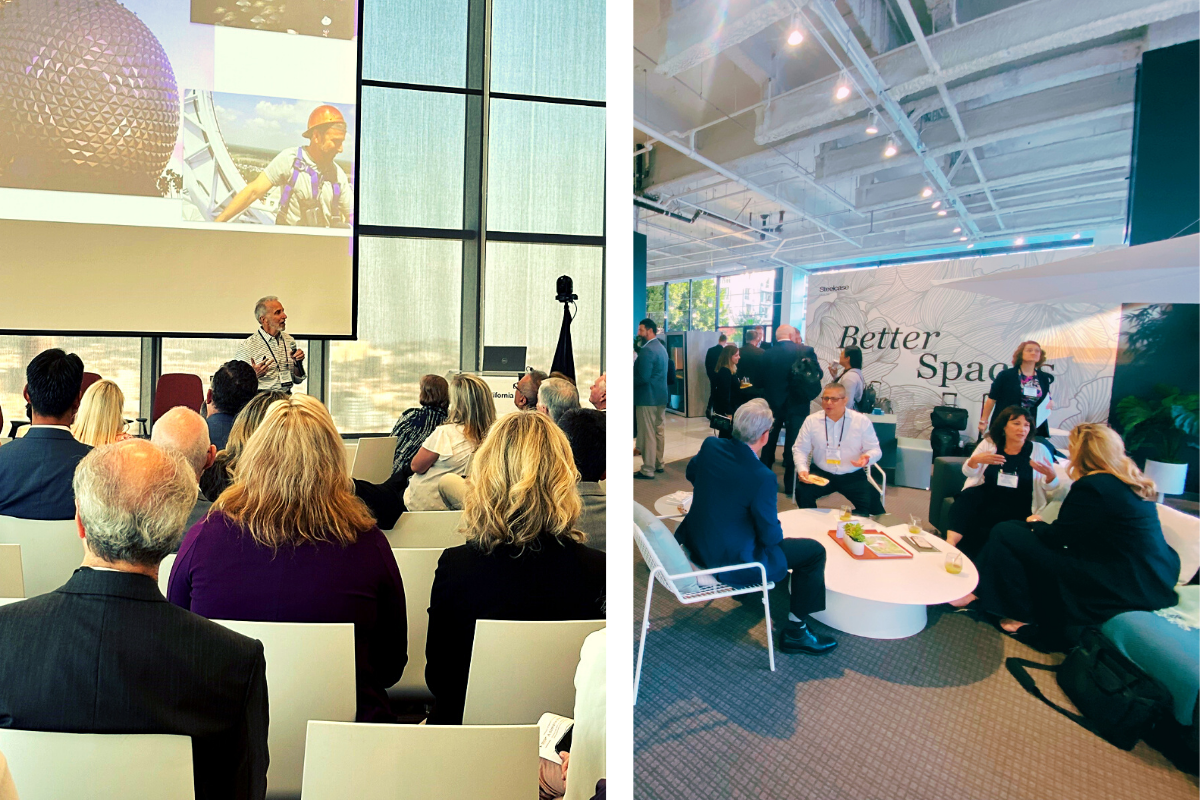
There is a tsunami of technological innovation sweeping through healthcare. How will the built environment respond when 95% of what happens in healthcare doesn’t take place in a hospital (and the 5% that does is being selectively reduced)? How architects are working with clients to understand and plan for this disruption was explored at the Healthcare Facilities Forum, October 11 in Los Angeles, San Francisco (and virtually everywhere).
Focusing on how Artificial Intelligence is impacting the healthcare industry today and what’s on the horizon, Keynote speaker, Dr. Ray Pentacost, FAIA, FACHS shared five drivers of the AI revolution:
1. Data volume -the physican we visit, in all likelihood, isn’t current. Watson can read all the articles published in a 24 hr period in the time it takes to drink a cup of coffee. We’re on the frontier of unescapable oblescene
2. High cost – healthcare is currently 20-25% of US GDP- economists learned from the Cold War if one sector of the economy becomes too big, it throws the rest of the economy out of whack and leads to a national downfall.
3. Computing speed – quantum computing is coming soon – the speed differential is about a million-to-one and this power will further empower AI
4. Quality healthcare-medical errors are the 3rd leading cause of death
5. Staffing Shortages – the system needs 203,000 nurses a year/until 2031; 53% physicians are reporting burnout; 16.7% hospitals report staffing shortages
Amazing advancements using AI tech will allow:
– Brain-computer interfaces (BCI) facilitating communication for stroke patients
– Next generation radiology tools -from Emergency Room triage to Virtual biopsies.
– Selfies as a diagnostic tool to identify 90 disorders!
– Early predictors for lung, pancreatic, and breast cancers
– Detection of early stage dementia by speech patterns
The greatest challenge to AI in the healthcare domain is not whether the technologies will be capable enough to be useful, but how to ensure adoption.
Given these transformative shifts, the architectural profession must expand its thinking -not only to create facilities which house these revolutionary advancements- but in the larger sense, recognizing every building we design impacts personal health
Smart, wearable technologies like Fitbit’s and Apple Watches have been capturing health data for years, but how this information is being used to evolve the design and delivery of healthcare has not been applied in a meaningful way. “We are data rich and information poor” said panelist Mark Gamble from the Southern California Hospital Association as he forecasted trends in tech innovation. Pentacost amplified this notion, stating: “Once we understand the impact of the environment and the impact of it on our behavior – then architecture will be transformed”.
Special thanks to the Healthcare Facilities Forum planning committee and all the speakers and sponsors who made this forum a reality.
See the video: A video of the conference is now available for registered attendees. Log-in to the Virtual Event Hub using the email you registered with and the password you set when you registered. Once you’ve logged in you’ll be able to click a session to view the recording. (Note – the recording is currently one long video so you can fast forward to the section you’d like to see.). If you have any issues accessing the recording email conferences@aiacalifornia.org for assistance.